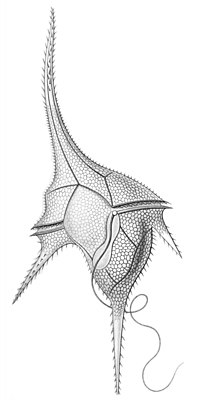
Exploring reliable reference genes for gene expression normalization in Karenia mikimotoi using real-time PCR
Sign Up to like & getrecommendations! Published in 2019 at "Journal of Applied Phycology"
DOI: 10.1007/s10811-019-01961-z
Abstract: The dinoflagellate Karenia mikimotoi is one of the most noxious species that can form harmful algal blooms in coastal areas worldwide, causing serious damage to aquaculture and fisheries. In the present study, twelve commonly reported… read more here.
Keywords: reference genes; expression; gene expression; karenia mikimotoi ... See more keywords

Photocatalytic inactivation and destruction of harmful microalgae Karenia mikimotoi under visible-light irradiation: Insights into physiological response and toxicity assessment.
Sign Up to like & getrecommendations! Published in 2021 at "Environmental research"
DOI: 10.1016/j.envres.2021.111295
Abstract: Harmful algal blooms (HABs) caused by Karenia mikimotoi have frequently happened in coastal waters worldwide, causing serious damages to marine ecosystems and economic losses. Photocatalysis has potential to in-situ inhibit algal growth using sustainable sunlight.… read more here.
Keywords: visible light; karenia mikimotoi; toxicity; inactivation ... See more keywords

Allelopathic interactions between the macroalga Hizikia fusiformis (Harvey) and the harmful blooms-forming dinoflagellate Karenia mikimotoi.
Sign Up to like & getrecommendations! Published in 2017 at "Harmful algae"
DOI: 10.1016/j.hal.2017.04.003
Abstract: The effects of algal blooms on seaweeds have been rarely studied, although harmful algal blooms (HABs) are now normally regarded as worldwide incidents. In the present study, the effects of dense Karenia mikimotoi cells on… read more here.
Keywords: hizikia fusiformis; fusiformis; mono cultured; karenia mikimotoi ... See more keywords

Toxic effects of the dinoflagellate Karenia mikimotoi on zebrafish (Danio rerio) larval behavior.
Sign Up to like & getrecommendations! Published in 2021 at "Harmful algae"
DOI: 10.1016/j.hal.2021.101996
Abstract: Karenia mikimotoi is a toxic dinoflagellate that forms harmful blooms in coastal waters, threatening aquaculture worldwide. However, we do not know whether K. mikimotoi has a neurotoxic effect on aquatic animal behavior. Thus, this study… read more here.
Keywords: behavior; toxic effects; karenia mikimotoi; effects dinoflagellate ... See more keywords

Application of clay minerals to remove extracellular ichthyotoxins produced by the dinoflagellates Karlodinium veneficum and Karenia mikimotoi.
Sign Up to like & getrecommendations! Published in 2022 at "Harmful algae"
DOI: 10.1016/j.hal.2021.102151
Abstract: Mitigation of fish-killing algal toxins by clay minerals offers great promise as an emergency strategy for fish farms threatened by harmful algal blooms, but its efficiency is highly clay and algal species (i.e. ichthyotoxin) specific.… read more here.
Keywords: karlodinium veneficum; veneficum karenia; mikimotoi; clay minerals ... See more keywords

Evidence for Production of Sexual Resting Cysts by the Toxic Dinoflagellate Karenia mikimotoi in Clonal Cultures and Marine Sediments
Sign Up to like & getrecommendations! Published in 2019 at "Journal of Phycology"
DOI: 10.1111/jpy.12925
Abstract: The toxic dinoflagellate Karenia mikimotoi has been well‐known for causing large‐scale and dense harmful algal blooms (HABs) in coastal waters worldwide and serious economic loss in aquaculture and fisheries and other adverse effects on marine… read more here.
Keywords: resting cysts; karenia mikimotoi; thin walled; dinoflagellate karenia ... See more keywords

Assessing the Effect of Modified Clay on the Toxicity of Karenia mikimotoi Using Marine Medaka (Oryzias melastigma) as a Model Organism
Sign Up to like & getrecommendations! Published in 2022 at "Toxics"
DOI: 10.3390/toxics10030105
Abstract: Blooms of the toxic dinoflagellate Karenia mikimotoi could threaten the survival of marine life, and modified clay (MC) is considered a promising method for the control of harmful algal blooms. Here, using marine medaka as… read more here.
Keywords: using marine; mikimotoi; modified clay; toxicity ... See more keywords